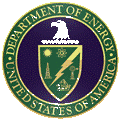United States Department of Energy

United States Department of Energy: Publications
Date of this Version
2011
Citation
WATER RESOURCES RESEARCH, VOL. 47, W08501 (2011); doi:10.1029/2010WR010118,
Abstract
Coupled intragrain diffusional mass transfer and nonlinear surface complexation processes play an important role in the transport behavior of U(VI) in contaminated aquifers. Two alternative model approaches for simulating these coupled processes were analyzed and compared: (1) the physical nonequilibrium approach that explicitly accounts for aqueous speciation and instantaneous surface complexation reactions in the intragrain regions and approximates the diffusive mass exchange between the immobile intragrain pore water and the advective pore water as multirate first-order mass transfer and (2) the chemical nonequilibrium approach that approximates the diffusion-limited intragrain surface complexation reactions by a set of multiple first-order surface complexation reaction kinetics, thereby eliminating the explicit treatment of aqueous speciation in the intragrain pore water. A model comparison has been carried out for column and field scale scenarios, representing the highly transient hydrological and geochemical conditions in the U(VI)-contaminated aquifer at the Hanford 300A site, Washington, USA. It was found that the response of U(VI) mass transfer behavior to hydrogeochemically induced changes in U(VI) adsorption strength was more pronounced in the physical than in the chemical nonequilibrium model. The magnitude of the differences in model behavior depended particularly on the degree of disequilibrium between the advective and immobile phase U(VI) concentrations. While a clear difference in U(VI) transport behavior between the two models was noticeable for the column-scale scenarios, only minor differences were found for the Hanford 300A field scale scenarios, where the model-generated disequilibrium conditions were less pronounced as a result of frequent groundwater flow reversals.

